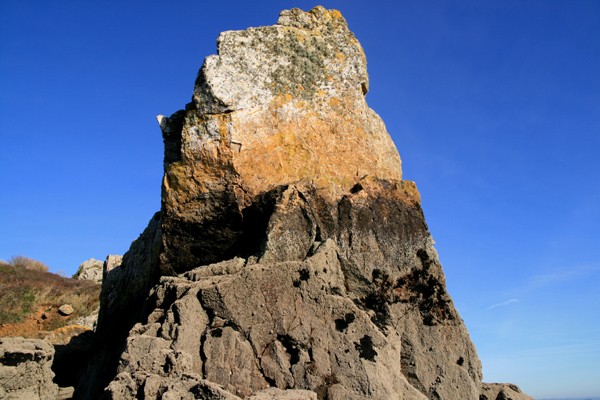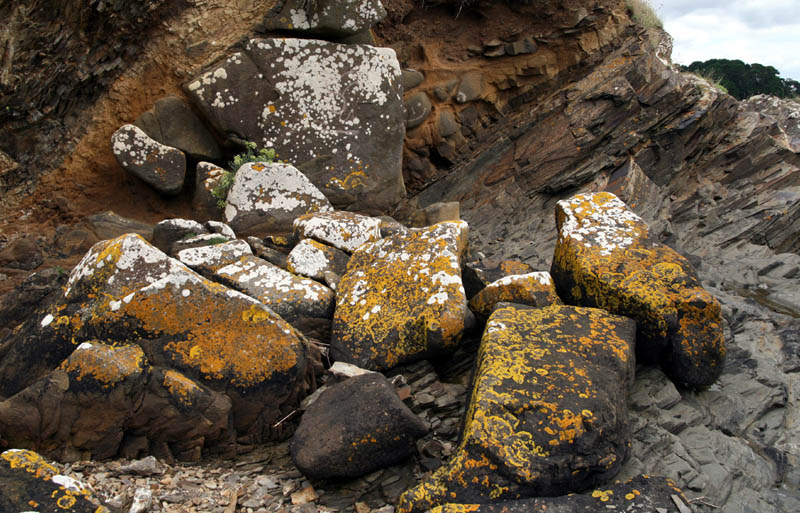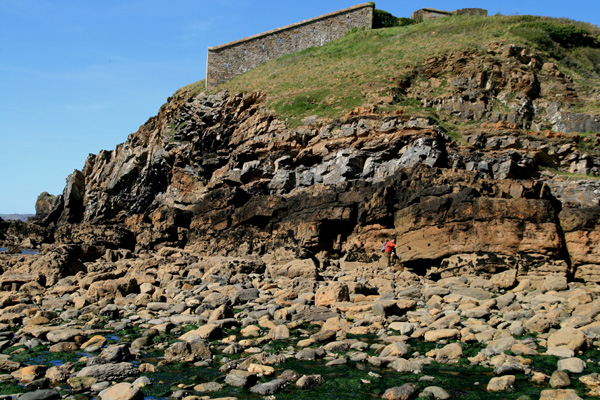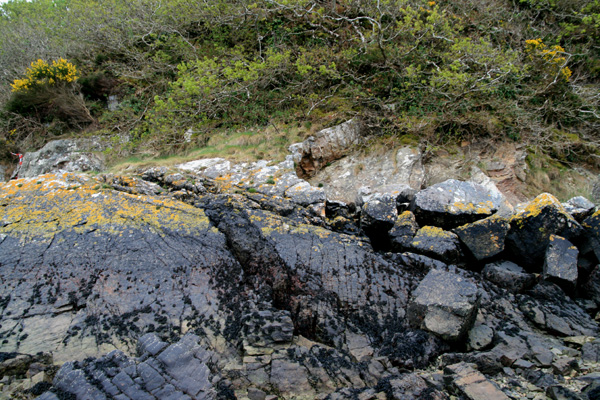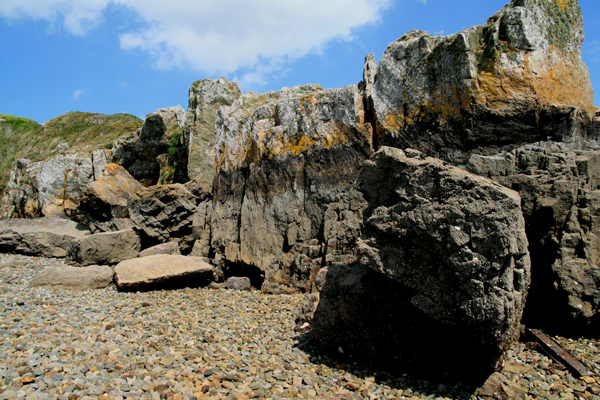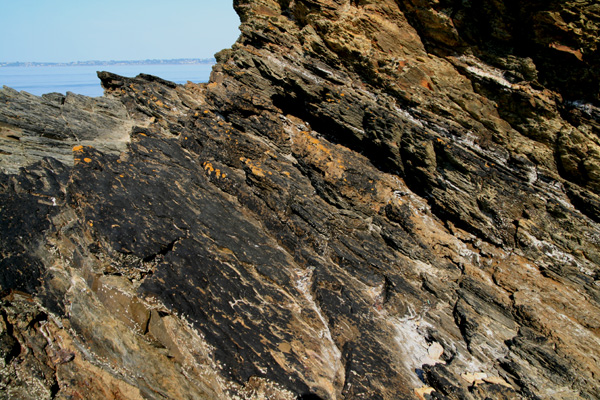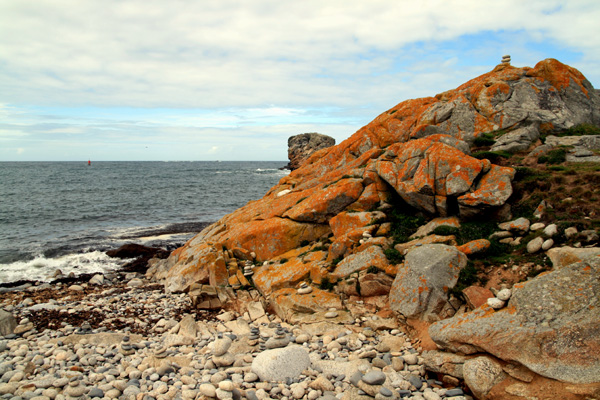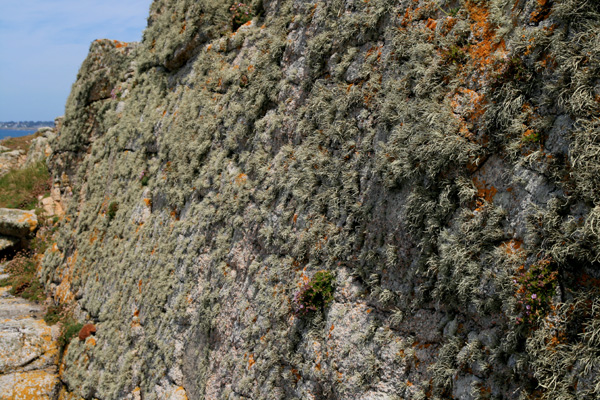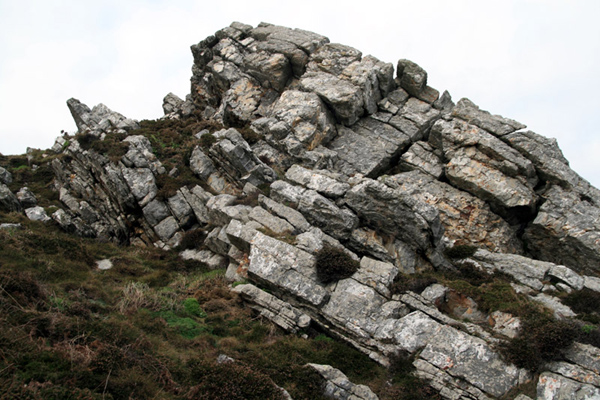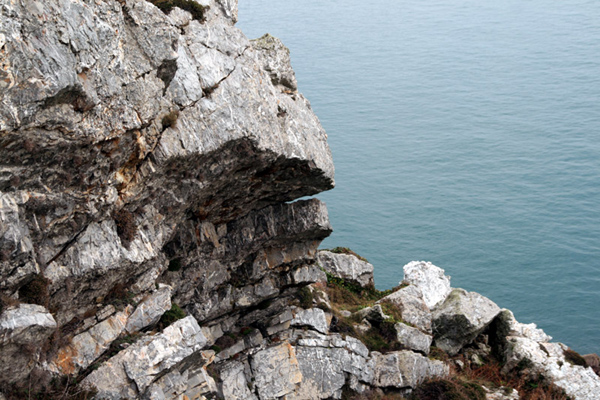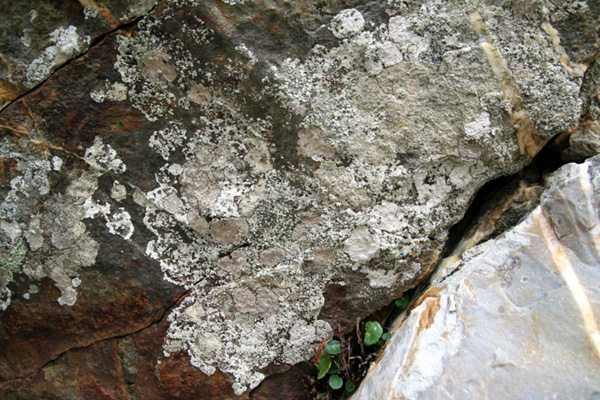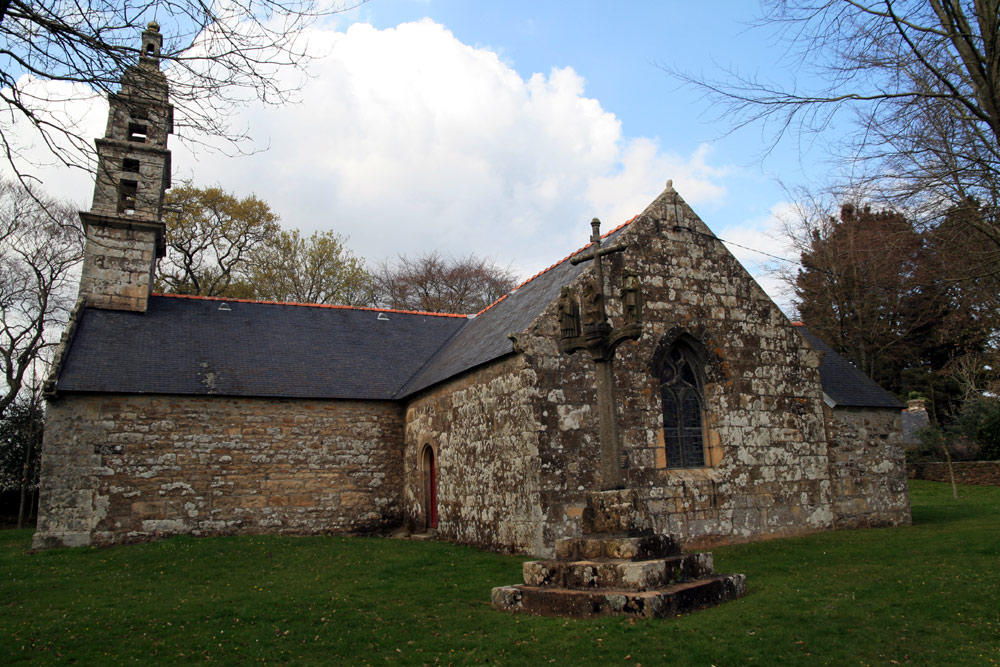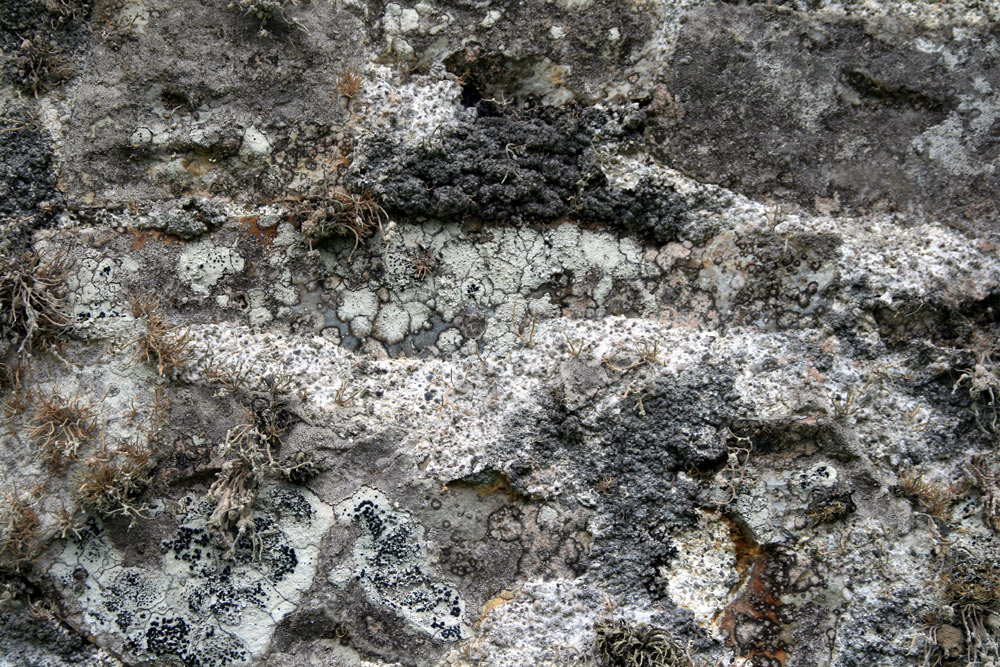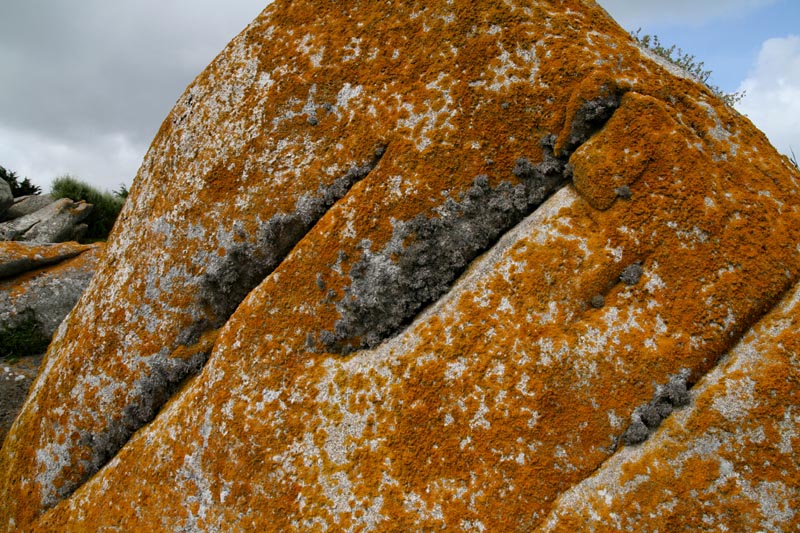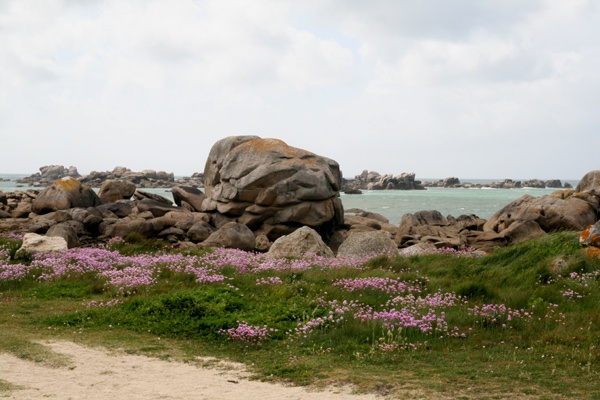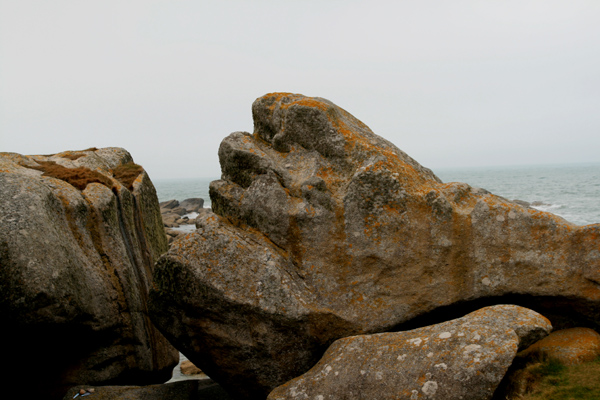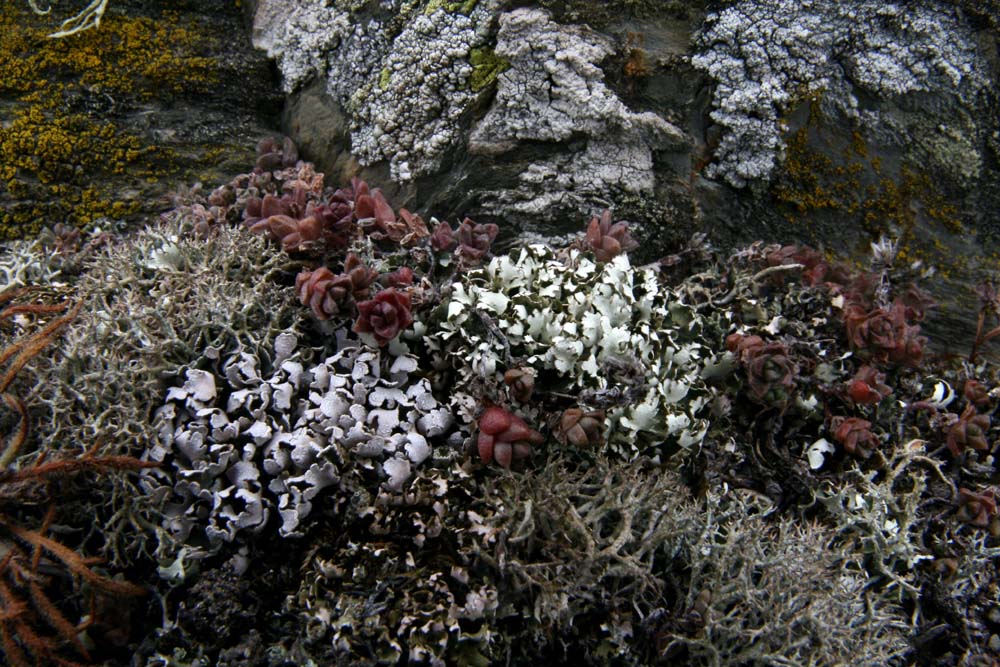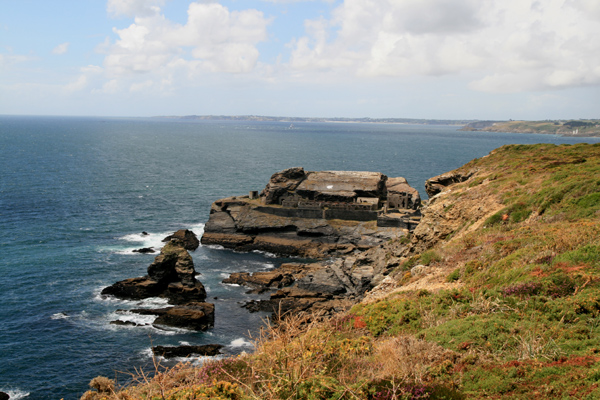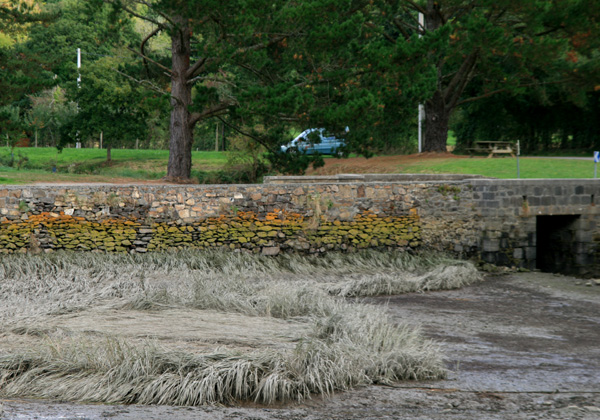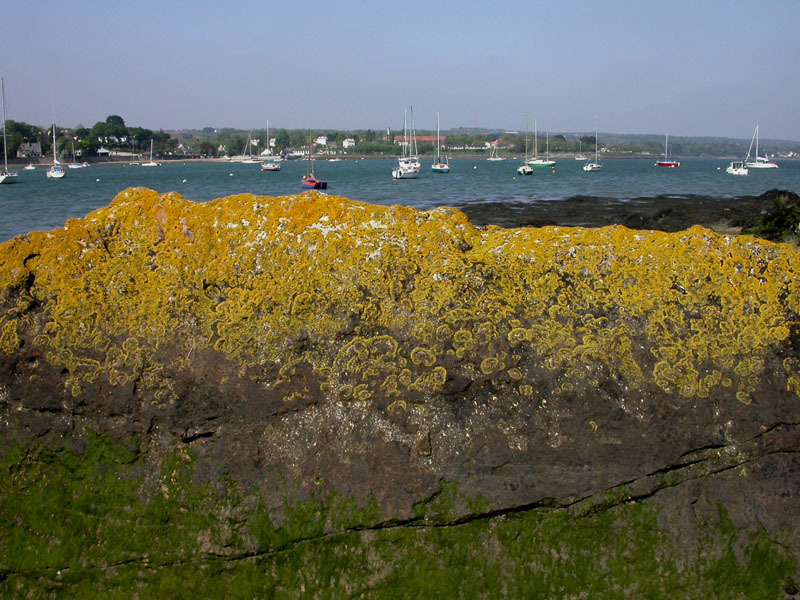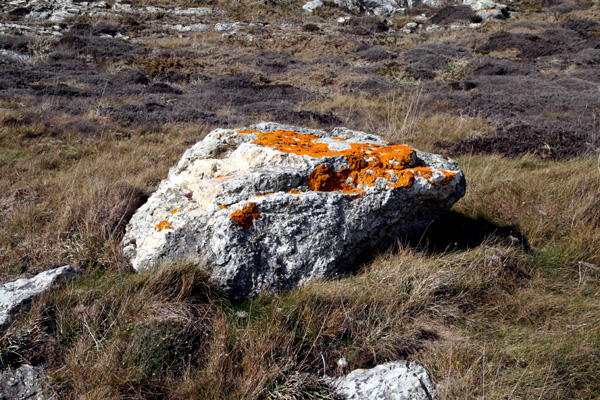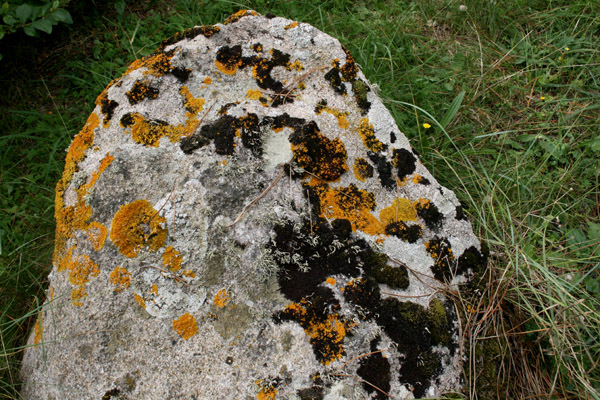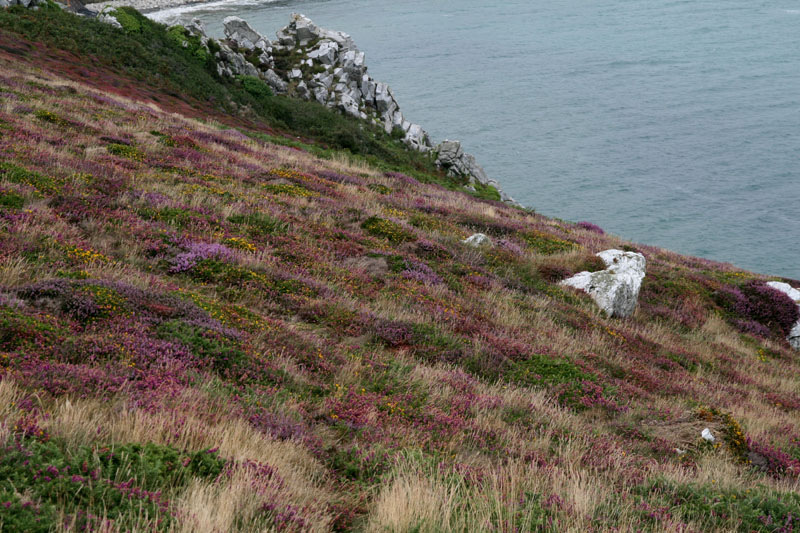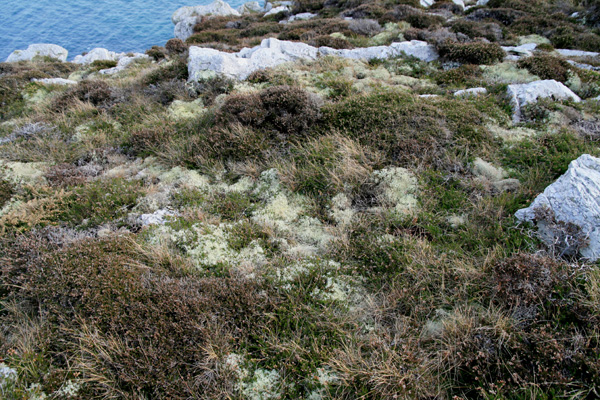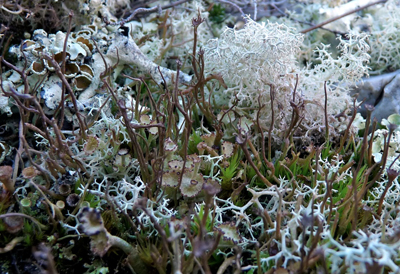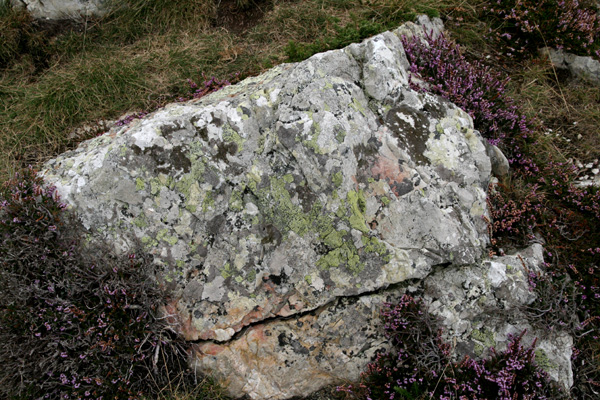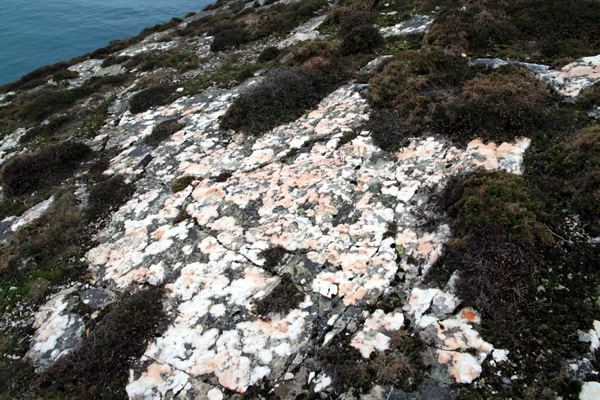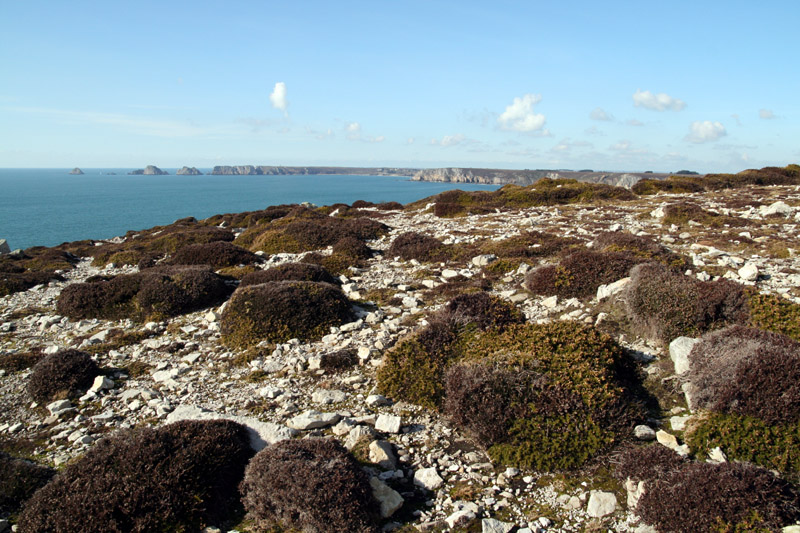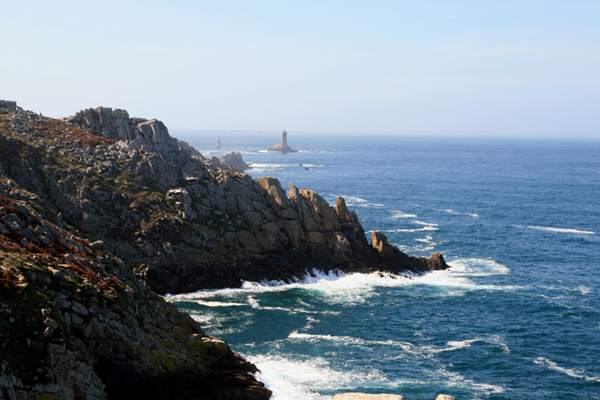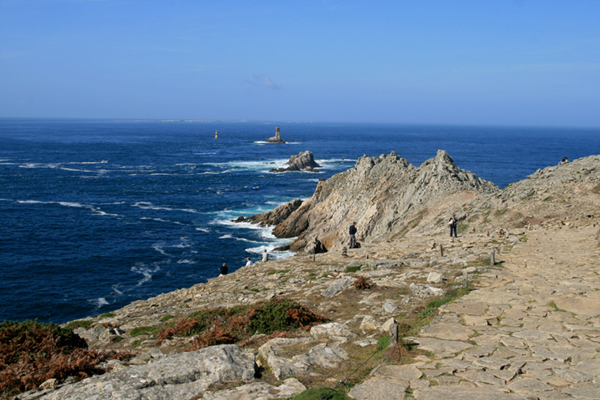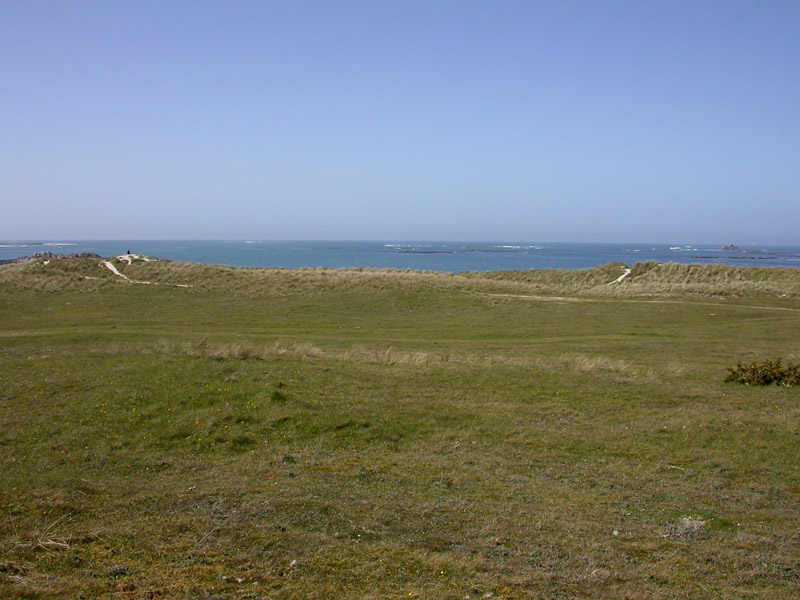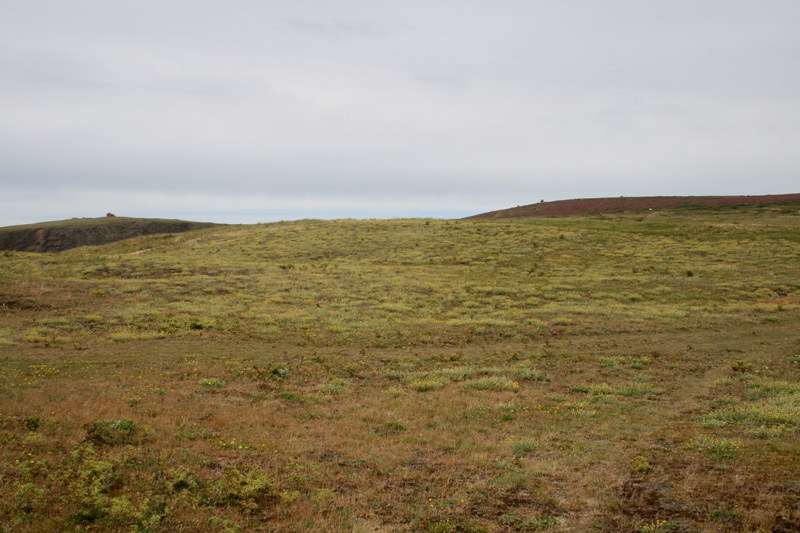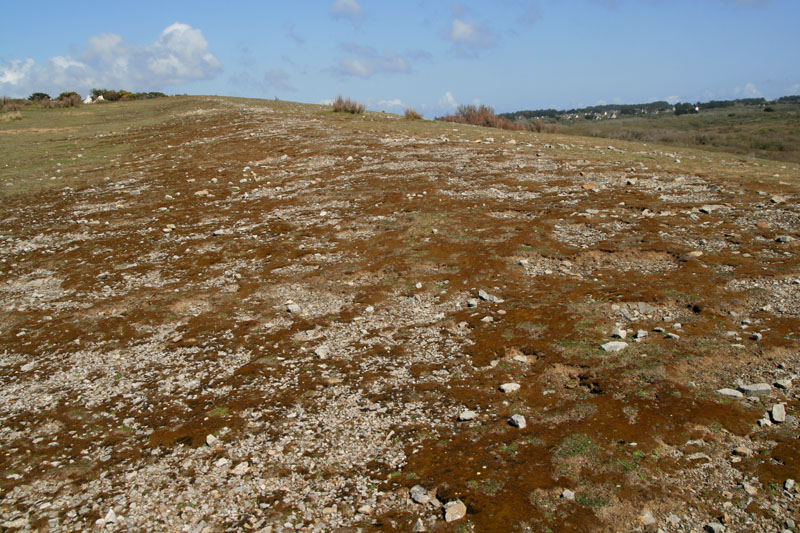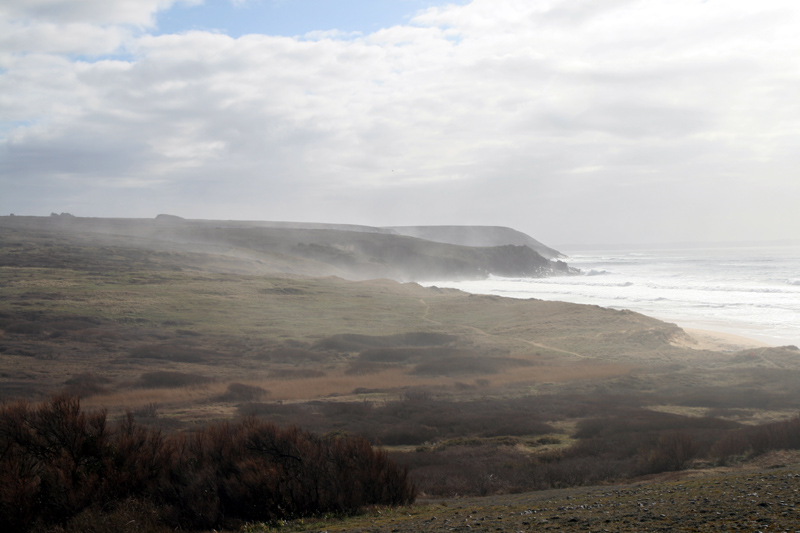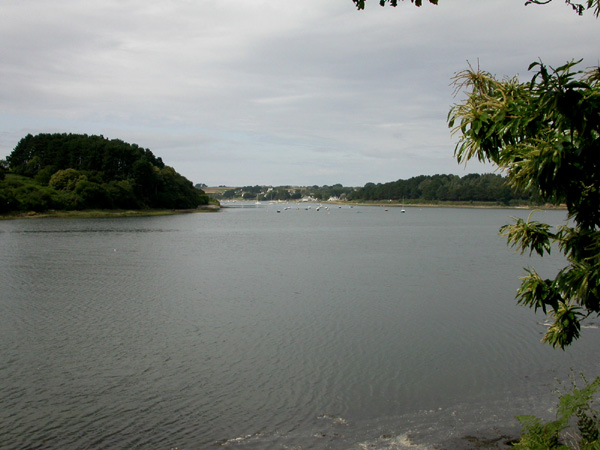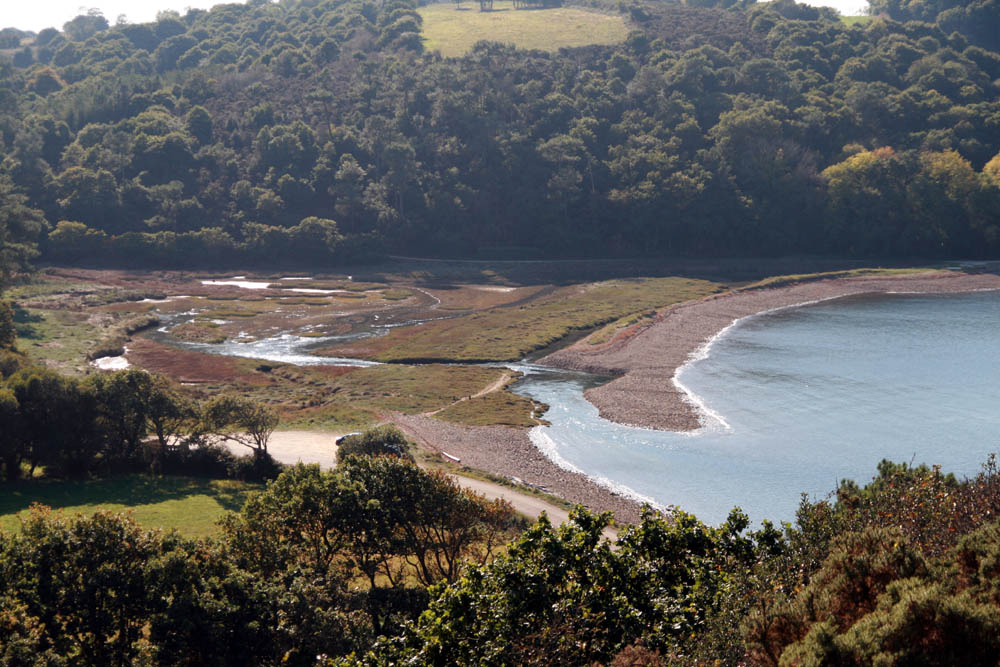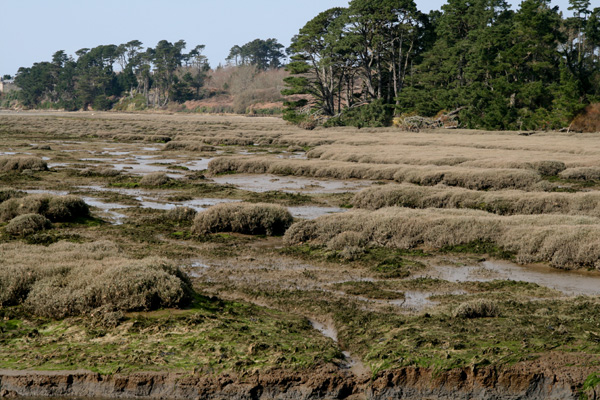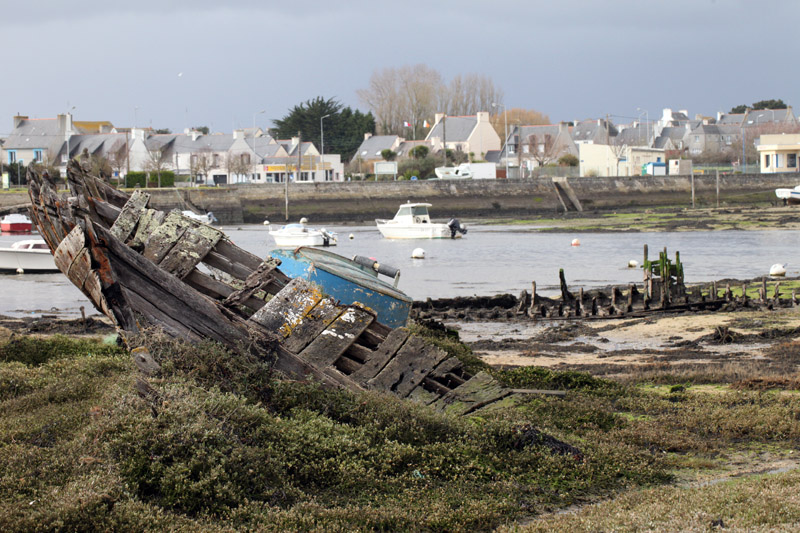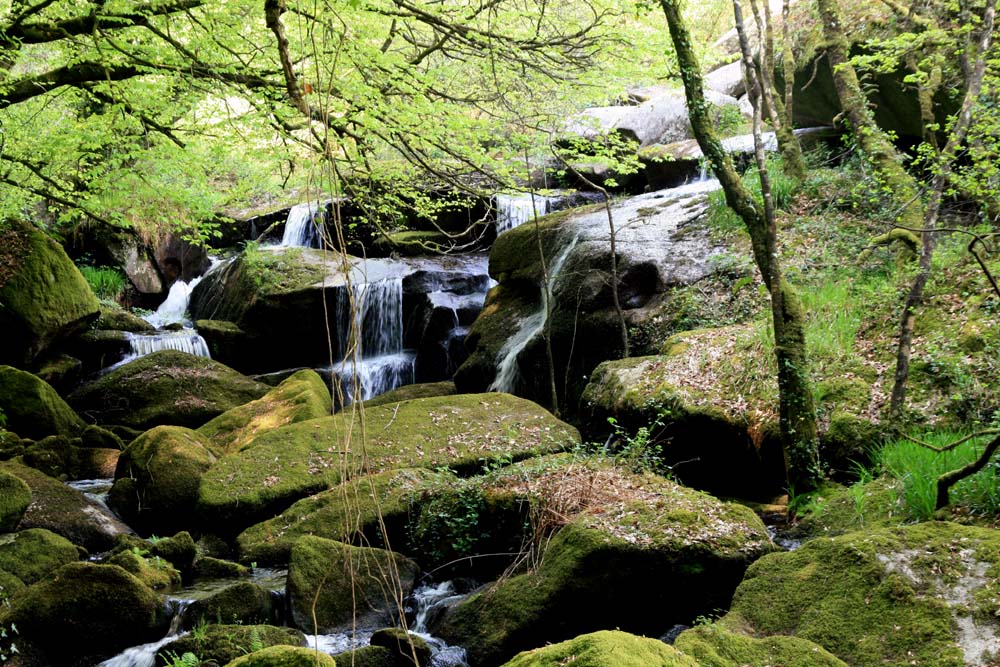|
|
||
|
||
|
FOREWORD This website is in constant evolution. The files are completed and modified according to new data availability. In order to inform the reader of any file modification and prevent time consuming alphabetic file screening, updatings are available directly under the 'News' tab (just click on the species name to open the file).
PRESENTATION
OBJECT OF THIS WEBSITE. This website is dedicated to the amazing lichen diversity of the coast of Brittany and more specifically to its very western region, the coast of Finistère. It has been established by a naturalist passionnately fond of lichens and his friends. Some lichens, not especially maritime, though found on the coasts or in areas under oceanic climate influence, are also presented here. This website is not a lichen flora since the usual determination keys are not available here as they are usually found in a standard flora. Anyone willing to improve his knowledge of maritime and oceanic lichens can find more information in complete lichen floras : see link page. This site is therefore limited to a non-exhaustive list of lichens, distributed or potentially present on the various types of Brittany coasts, and more generally on the coasts of the English Channel and Atlantic Ocean. It also includes areas under influence of the oceanic climate which display very specific characteristics. These areas are widely distributed in our prospection territory. This website might, to some extent, be considered as a continuously improving basis for an update of the lichen inventory of maritime and oceanic species as well as non-maritime species interestingly but rarely found in our prospection area. We have included in our list (i) strictly 'marine' lichens, corresponding to those subjected to tides in the littoral zone, (ii) 'maritime' lichens living in a narrow coastal zone directly subjected to sea water projections and sea spray, also called supra-littoral zone. These groups of lichens are found exclusively there. Higher on the coasts is located the terrestrial zone. It includes the aerohaline zone subjected to sea spray during storms. The extension of this zone is variable and depends upon topography and winds. Two groups of species are found in this zone: halophilic species (loving salt), seldom found inland and halotolerant species (salt tolerant) that more often can be distributed inland. In the latter, which includes ubiquitous species (being found everywhere in regions subjected to oceanic climate), some very common species that might be confusing will receive a special attention in order to allow comparisons. In the same way, in order to compare different ecotypes, we have included pictures of some species taken in different environments, or even growing in different regions or countries under different climates. In Brittany, near the sea lichens belonging to a a group called 'oceanic' can be found. They are dependent upon the wet and mild climate. They are found in wooded coastal valleys and slightly inland on the banks of Rias and Abers (local names of Lochs). Several species belonging to this group, among the most representatives and easy to determine, will be presented here. METHODS. Each lichen is presented in a specific file that includes a brief descriptive text and photos taken on the field, sometimes completed by photos taken in the laboratory. The taxa nomenclature used here is based on the recommendations of the 2011 Melbourne International Botanical Congress and on the Nomenclature Committee for Fungi (Report of the Nomenclature Committee for Fungi 19: Official repositories for fungal names. Scott A. Redhead & Lorelei L. Norwell. Taxon 62 (1) February 2013 : 173-174). Three officially recommended sites exist:
Index Fungorum : http://www.indexfungorum.org MycoBank : http://www.mycobank.org Fungal Names : http://fungalinfo.im.ac.cn/fungalname/fungalname.html and its associated paartner: CABI : http://www.cabi.org Dryades : https://dryades.units.it/
Each species file displays : - A brief descriptive presentation of macroscopic, microscopic and chemical characteristics and the habitat in our prospection area. This presentation is merely a general guide and is not intended to replace a lichen flora. It will be completed according to our expertise related to the species in our prospection zone. The main floras used for species determination are the 'Dobson' and the 'Smith et al.' (references available at link page). For delicate determinations we have taken the advice of international specialists who correspond with us. - Photos taken in the field: they don't have a 'studio' quality but are often more realistic since they clearly show the lichen micro-environment. We display as often as possible several photos aiming at presenting the different aspects of the species, and more especially fertile and sterile forms (if existing) that might be found in the field. In a first stage, mainly close-up pictures showing the species as they are found in their typical habitat, will be displayed. In a second step, if possible, the file species will be completed by macrophotos showing the most important morphological characteristics. In a third stage, microscope photos will be added, but only when they are required for species determination. For the same reason, the colored reactions resulting from chemical reagent assays are added whenever necessary to confirm species identification. Finally, in some cases photos taken in different regions, Basque country, North-West of Spain, Macaronesian Islands mainly, are presented showing the various morphotypes encountered. This approach allows a comparison of species usually fertile in the South of Europe and infertile in Brittany. - A map showing the main sites where the species have been observed. This map is subjected to modifications in relation to new discoveries and data. The maps intentionally are rather general since other more elaborate projects are running in parallel. Nevertheless, we welcome any query from lichen-lovers who would like to have more detailed information about the precise distribution of a given species because the majority of species have been located by GPS. We did not find all the species mentionned in the list. This explains why some photos are still lacking in some files. For some other species, our current photos do not have enough quality to be displayed here. New photos will be inserted and files completed as soon as our discoveries allow us to match the minimum required quality. As well, in case of new disocvery, rather low quality photos will gradually be replaced. In addition, some species are still under analysis and will be included in this list as soon as possible. We invite all naturalists interested in lichens to inform us of their findings and to communicate their pictures and observations. They will be inserted in this website, under their name and under their responsability as far as the determination is concerned. Lichen species determination often is difficult and the risks of errors are rather high. Some species have important morphological variations, some other are poorly known and described and possibly subjected to revision. This is the main reason why this website is continuously updated. All readers comments will be taken into account if justified and if they have added value to the website. When all determination criteria are not available (lack of mature spores, chemical assays uncomplete, etc.) we have added to the name of species the sign Cf. to draw attention on the determination uncertainty. We encourage all lichens naturalists to share their opinions on species determination, pictures and comments presented here and to point out text errors or improper expression. In addition, they can share their observations and submit their pictures for an extended discussion in relation to difficult determinations and possibly to have their names figuring in the website contributors. Finally, we wish all the readers interesting findings along the coasts of Brittany, from the English Channel to the Atlantic Ocean. Alain GERAULT
PROPOSED SERVICES. All the photos of this website are freely available on request, to the exclusion of commercial use. They are available in various definitions and with the proper information on the observation or sampling sites. _ Herbarium samples: For most of the taxa presented we have samples in limited amounts since we apply a basic principle: limit the sample collection to what is strictly needed to proceed to identification. They can be shared with researchers who would be interested, provided that they indicate the goal of their work. In addition, we have localized with an approximately precision of one meter, the sites where the taxa presented here were found and we can provide fresh samples on request. This service is provided to researchears interested in fresh samples to conduct molecular taxonomy and phylogeny, notably rDNA, ITS, or multigene approaches including enzymes of interest. (In such a specific case, please contact us under the link 'Contact' in order to specify the conditions and the protocol of sampling, conservation and transport).
INTRODUCTION TO THE STUDY OF COASTAL REGIONS LICHENS
Lichens have been able to adapt to almost all habitats on Earth including some marine dependent environments. Some species of lichens are restricted to wet and salty environments and most of them are represented in Brittany and in its very Western part, the Finistère. This area is characterized by a huge variety of seashores as well as by an important number of local micro-climates that make possible the simultaneous observation of Northern species and Atlantic species on rocks, dunes and heaths, walls and buildings. The numerous estuaries along the coast are rich in marine and maritime lichen species and especially in some species adapted to brackish waters. In addition, the soils are not limited to acidic and granitic rocks. Some spots of calcareous or alkaline rocks are also found in areas well known for their important geochemical diversity like the Crozon Peninsula and some islands. As a consequence, the Finistère can be considered as the heaven of lichenology, considering the fact that some species abundant there are not found elsewhere. The main drawback of this local lichen richness is that some rare species eslewhere are poorly or not described at all, in standard floras. We attempt here to fill remaining blanks knowing that a correct species determination required the microscopic observation of apothecia from fertile samples. Sterile samples must be subjected to a chemical analysis, and the use of a UV lamp gives a preliminary information. Therfore we restrict the presentation to canonical morphotypes easy to recognize without major error risks. Keep in mind that the subset presented here is only a small fraction of what can be observed on the field and that many samples will stay with the Cf. mention or with no name assigned. However, this should not be a reason to complain and nobody can deny you the right to enjoy the expeditions along the seashore in amazingly beautiful landscapes and tonic climate. Be aware that the exploration of some coastal cliffs might be dangerous and that several accidents, including severe casualties and deaths, are recorded every year. The basic material for field observation is limited to a magnifying glass and some chemical reagents: I, for iodine solution; K, for 10% potassium solution ; C, for high concentration of sodium hypochlorite; P, for 1% stabilized paraphenylenediamine. To be more precise, it might be necessary to collect samples (strictly limit or avoid this practice for rare and endangered species) and to examine them under a more powerful binocular magnifying glass and/or under a microscope after appropriate preparation. A UV lamp can be useful for identification of fluorescent species.
Specificity of coastal lichens studies.
The coasts of Brittany are characterized by their high range tides. Prior to any expedition along the seashore, one should first care about tide hours and range since some species can be observed only at low tide. In addition, the lower parts of cliffs are accessible only during a short period of time making observation risky for absent-minded lichenologists! Finally, it is also advisable to look for weather forecasts since in case of storm it might not be recommended to face the strong winds and waves frequently observed in Brittany. The second precaution to observe while arriving on site is to examine the colors of rocks. Indeed, the various species of lichens usually are distributed on rocky shores according to typical strata beginning from the high tide mean value level. Consequently, the strata are larger and more visible in areas subjected to tides with extreme ranges. The main color of a stratum is directly dependent upon the colors of the dominant species thriving there. This makes possible a first approach of lichens (or at least lichen clusters) based on their distance from the mean level of tides. This approach based on what is called 'lichen belt' is very convenient for lichenologists since the probability to find some species in a define stratum (or belt) is rather high. Unfortunately, this canonical distribution is far from being general, and if it is found in favourable locations, it is frequently disturbed by multiple factors. On this rock beaten against waves, photographed at low tide, the different belts of lichens are clearly visible:
Pointe de l'Armorique. At the lower part of the rock, there is no specific color. Or it takes the color of living organisms thriving there : grey for barnacles and limpets and algae : this is the grey barnacles belt. Some black spots can be observed that are not algae but a lichen : Lichina pygmaea. Slightly above, a large black stratum can be observed. This is not some tar deposit or oil contamination as it might be hypothesized (unfortunately, sometimes it's the case!) but the result of colonization by crustaceous lichens belonging to the Verrucaria genus. This is the black lichens belt. Above this stratum begins another belt characterized by their intense yellow and orange colors. At the top of the rock a grey-greenish zone can be found : this is the grey belt. Sometimes, at this level in places not beaten against the waves, a more or less continuous white belt can be observed. Behind this rock, we can see the top of the shore where the first plants appear. They are adapted to harsh conditions : strong winds, sea spray, intense solar exposure, etc. This is the aerohaline zone where numerous species of lichens can be found specifically adapted to these climatic conditions. These colored strata are very convenient and of high interest to the amateur botanists, but scientists often prefer a more precise classification that will be detailed below. On the following picture of rocks taken at low tide, in a remote place of the Brest Sound weakly beaten against the waves, above the algae stratum we can distinguish the different belts described previously. These strata correspond approximately to the following zones:
Porzguen. 1. Sublittoral zone : submerged except at extreme low tides. This zone is colonized by algae but lichens are unable to survive to constant submersion. 2. Littoral zone : frequently submerged. It corresponds to the zone exposed to tides and can be subdivised in two sub-zones : 2.1. Eulittoral zone : located below the mean level of tides, it expands to the upper limits of barnacles. The first lichens are to be found here and more specifically some species of Collemopsidium attached to the rocks, barnacles and limpets, and some Verrucaria species. 2.2. Littoral fringe : located above the mean level of tides. It partly corresponds to the black belt. Dominated by Verrucaria species and notably by Verrucaria (Hydropunctaria) maura. 3. Supralittoral zone : only very rarely submerged in the lower regions but subject to heavy spray. Divided in two sub-zones. 3.1. Mesic zone: in the lower part, only submerged at extreme high tides. It corresponds to the yellow and orange belt. To be more precise, but this is not a general rule applying everywhere, this mesic zone is subdivided in : _ a restricted mesic zone with dominant Caloplaca species inducing orange colors (orange belt). _ higher, a submesic zone dominated by Xanthoria species that induce a yellow color (yellow belt). Above this submesic zone a terrestrial zone little affected by sea spray is found. Making the transition or intermingled with the submesic, we sometimes can observe a 'white belt' resulting from the development of whitish crustaceous lichens and notably Ochrolechia parella, Lecanora gangaleoides and Tephromela atra. However, this white belt does not exist everywhere and is mainly observed on the large steep surfaces of rocks little exposed to waves.
3.2. Xeric zone : only light spray but harsh conditions of drying and wetting. It corresponds to the grey belt dominated by Ramalina species and especially different morphotypes of Ramalina siliquosa. 4. Halophilic zone : terestrial zone little affected by sea spray. There, plants start growing and not only lichens. In this zone we can find some species best adapted to the supralittoral zone and halophilic species as well as inland species tolerant to salt. This zone, depending upon topography and exposure to dominant winds can extend from hundred meters to several kilometers inland. N.B. These different lichen zones are not defined in a strict manner. Some species characterizing one zone sometimes can be found in a different one according to the local topography, the waves, the winds, etc. 5. Oceanic zone : this refers to the areas subjected to the oceanic climate of Brittany. It includes the rare wooded areas along the coast, the Rias, Abers and rivers banks as well as small wooded islands. It is the prefered domain of species requiring a mild climate and a high humidity, conditions hardly satisfied except near the sea. This zone might considerably extend inland where rainfalls are abundant and winds still strong.
ILLUSTRATIONS
Rocky shores Lichen zonation as it has been defined can be more detailed since, inside the canonical zones previously described, other very interesting habitats exist.
During extreme low tide the seashore is completely exposed and the littoral zone corresponds to rocks without macroalgae. In this zone, marine species belonging to genera Collemopsidium and Verrucaria can be found.
Le Loc'h. On this picture taken at low tide in an area little exposed to waves, the black zone has a large extension, from the the littoral zone, where algae can be seen, to the mesic supralittoral zone. In this black zone, several species of Verrucaria can be observed in different strata above the mean tide level.
Pointe de l'Armorique (Armorique Head) The black zone is easily observable here. Quite regular at its base it does not extend witin the littoral zone and the grey barnacles belt because waves are too frequent. However, the black zone irregularly interfers with the orange belt, a quite commonly observed phenomenon in areas strongly beaten against waves and exposed to spray. The standard distribution is Verrucaria (Hydropunctaria) amphibia in the lower part and Verrucaria (Hydropunctaria) maura in the upper. This species can also colonize the orange zone and in some cases the grey one.
Pointe de l'Armorique (Armorique Head) A small black zone with dominant Verrucaria (Hydropunctaria) maura above the orange zone can be observed in this well protected Brest Sound area little exposed to spray.
Porspoder. Sometimes, according to local conditions, the orange belt can extend rather far and high as it may be seen here on this rocky shore well exposed to storms in front of Ouessant Island. These rock piles are continuously beaten against the waves and the winds transport the sea spay on huge distances with a direct effect on the plants trying to survive to harsh conditions. Here, in the lower part, the color is mainly due to Caloplaca maritima that spreads also higher and intermingles with Xanthoria aureola near the summit. On the right side the top of the rock exposed to sun harbours beautiful colonies of Lecanora actophila.
Lampaul-Plouarzel. The grey zone in this vertical rock face is the prefered domain of many Ramalina species and of many other crustaceous species well adapted to this habitat. The rock faces are also characterized by holes and overhangs that are protected fom direct rain and light :
Pointe de Pen-Hir (Pen-Hir Head) At the Pen Hir Head, erosion of the Armorican sandstone strata has created many sheltered areas easily accessible (upper picture) as well as numerous inaccessible overhangs (lower picture).
Pointe de Pen-Hir (Pen-Hir Head). These shady overhangs are the favorite habitat of the Sclerophytetum circumscriptae. Surprisingly the lichen populations thriving there are very rich and its exploration is full of good surprises. Pointe de Pen-Hir (Pen-Hir Head).
Chapelle Saint Claude. The old chapel walls exposed to North are to some extent similar to rock overhangs found in coastal cliffs. Due to strong winds, chapels in costal areas are scarcily protected by trees in their enclosure. However some of them, in more sheltered locations, are surrounded by trees that might deserve interest from lichenolgists (sea picture above). On the walls of the chapel or on the enclosure wall, species belonging to the Dirinetalia massiliensis that sense very efficiently the substrate acidity vs the alkalinity developed by cement and mortar can be found, and notably Dirina massiliensis var. sorediata, Lecania sp., Lecanactis sp., Enterographa pitardii, Buellia saxorum, etc. and often Lecanographa grumulosa and its variants which sometimes parasite the species belonging to this cluster (see below).
Chapel North wall, Camaret. On the coast of Brittany, many rocks and rock piles are exposed to waves and winds.
Kerlouan. This rock makes the transition with the aerohaline zone. It is completely covered by tinctorial lichens belonging to the species Xanthoria aureola in areas exposed to sun and to two species of Rocella in crevices.
Kerlouan. Behind the littotral and the supralittoral zone begins the aerohaline zone. In this zone, when rocks display overhangs protecting them from rain, Rocella can be found (as observed on the previous picture). Often, these rocks show long vertical wet cracks that help water drainage. Indeed, some species are well adapted to these micro-habitats. The top of rocks serve as bird-perching and is often rich in faeces. The orange color is due to species (mainly Xanthoria) different from those found in the orange belt below.
Kerlouan. On this rock, water run-offs are clearly visible and richly populated by species adapted to this micro-habitat. Cracks may contain organic matter or even soil and create 'garden containers' well adapted to numerous species of soil lichens.
Pentrez. Here at least five Cladonia species coexist in a tiny hole full of soil at the basis of a big rock not very far from the shore and from a dune: Cladonia foliacea, Cladonia subcervicornis, Cladonia firma, Cladonia furcata subsp. subrangiformis et Cladonia rangiformis. Fort des Capucins. This easily accessible old maritime defence fort harbours many species of lichens from its lower part beaten against the waves to its top used as perch by birds and guano rich. In addition, old walls where stones have been assembled with calcareous mortar display run-offs that induce alkalinisation of stone surfaces favourable to different species of lichens. Other species depending upon shadow and wetting on North faces are also found as well as thermophilic and heliophilic species on South faces.
Kerzinaou. It is easy to find the same strata on piers and wharfs in harbors, but here in this port full of sediment in a remote location of the Brest Sound, the water is brackish, rich in nitrogen compounds and in organic matter. There is no black zone since Verrucaria (Hydropunctaria) maura cannot tolerate neither salinity drop nor silt. Within orange and yellow belts, Caloplaca and Xanthoria species, different from those thriving on rocks facing ocean, can be found.
Le Passage. This is another example of perching-bird rock deprived of black zone in the river Elorn estuary (note the abundance of nitrophilic species on the top and particularly Xanthoria sp).
Lostmarc'h. This isolated rock in aerohaline heath exposed to sun is also used as perch by birds. The top is nitrogen rich and colonized by specifically adapted Xanthoria and Ramalina species as well as other crustaceous species belonging to the Rinodina genus.
Landunvez. Here is an other example of rock, located on dune very close to the shore and subjected to sea spray.
Cap de la Chèvre, Saint-Hernot. (Chèvre Head, Saint Hernot) The acidic aerohaline heath represents a distinctive habitat. It is the place where a great number of Cladonia built up large colonies (sea picture below), but not only : many more understated species grow on branches and roots of heather and gorse or simply on the soil.
Kerguélen. Cladonia colonies adapted to the acidic soil of aerohaline heath.
Cap de la Chèvre. (Chèvre Head) Beautiful bunch of Cladonia sp. on soil.
Kerguélen. Isolated smooth or little rough rocks, especially in aerohaline heath (here Armorican sandstone), often are covered by crustaceous lichens, notably species belonging to the Rhizocarpon genus.
Kerguélen. The whitish color of crustaceous lichens growing on rocks in the aerohaline zone frequently subjected to sea spray can turn to pink or beige-pink during the bad season. This color is gorgeous but it might be confusing since it turns classical and common species usually easily recognized into species ... difficult to determine.
Cap de la Chèvre. (Chèvre Head) In some severely exposed zones, heath can significantly be degraded. In such habitats, heath is limited to small cushions. Yet many species of lichens, attached to small stones or pebbles, are able to survive or even to thrive in this harsh environment. Orientation is an important parameter. The Head of Raz has been photographed the same day at the same hour. The first photo shows the North coast rock piles with heath in the upper part. This zone is wet for most of the day and little exposed to sun. Numerous 'oceanic' and 'Atlantic' species requiring mild and wet conditions are found there, whereas thermophiles and heliophiles species are rare.
Pointe du Raz, Nord/ North Raz Head On the contrary, the South coast, more exposed to sun, is bare and dry. Thermophilic or heliophilic species, able to sustain dryness, even prolonged, are typical of this habitat.
Pointe du raz, Sud/ South Raz Head
Sandy coasts. The sandy coasts generally are edged by dunes. Usually dunes in Brittany are acidic. Their sand is mainly composed of silica. Active dunes are also fed into shell fragments increasing their pH, sometimes up to an alkaline level. However, ancient dunes have lost their calcareous content. The plants cover there is very sensitive to the calcareous content and lichens are no exception to that rule. Before lichen prospection on dunes, the observation of plants is recommended to determine the type of habitat. This will help the determination of Cladonia, since usually they are very sensitive to soil composition.
Ploudalmézeau. Ancient decalcified grey dune rich in Cladonia.
Lostmarc'h. Slightly calcareous dry dune with Everlastings (Helichrysum stoechias) also rich in Cladonia.
La Palue slightly calcareous, low and dry dune. A very dry zone is observed at the dune edge. The gravels and stones are composed of slightly acidic Armorican sandstone, enriched by shell fragments. As a consequence, this zone display numerous thermophilic and calciphiles species of lichens belonging to the Toninion caeruleonigricantis and notably : Cladonia pocillum, Diploschistes muscorum, Fulgensia fulgens, Psora decipiens, Squamarina lentigera, Toninia sedifolia, etc.
La Palue dunes. At the bottom of the hill, during windy days, dunes are subjected to spray as clearly shown on the photo. In the back, a stream bordered with bushes (willows, poplars and ash trees mainly) can be observed. This hardly penetrable zone, permanently wet, little exposed to wind and devoided of frost, is propitious to 'oceanic' species.
Remote zones of 'Abers' and 'Rias' (lochs and rivers), salted marshes. The remote zones of 'abers' and 'rias', as well as salted silts, present a very interesting and well adapted vegetation. Some lichens are also adapted to these habitats and more specifically on ligneous debris and driftwoods.
Aber Benoit. The 'abers' banks are often wooded. One of the main distinctive feature of these zone is that trees extend to the seashore, like here the Aber Benoit.
Anse du Loc'h. Located in a remote part of the Brest Sound, 'L'Anse du Loch' is a very good example of a wood preserved from human influence. Due to the water body the climate is very mild, with frequent fogs and mists. Frost is rare and humidity high. These woods, under preservation status, are sanctuaries for 'oceanic' species. The marshes found there are also rich in halophilic lichens.
Ria du Conquet. The remote part of the 'Ria du Conquet' is a very good example of these distinctive habitats that unfortunately are more and more endangered.
Port du Guilvinec/ Guilvinec Harbour. The remote part of harbours and 'rias' have traditionally been used as boat and ship cimeteries. Wood wrecks (less and less frequent on the coasts of Brittany) are important shelters for an abundant and diverse populations of nitrophilic and halophilic lichens as shown here on this wreck in Guilvinec old harbour.
'Oceanic' forests and ravine woods. These very distinctive habitats are characterized by at least 180 days of rays per year, and a permanent humidity due to the hill streams. The climate is mild and numerous 'oceanic' species of lichens can be found in the vegetation either on trees or rocks nearby the streams, often in abundance. However, this type of habitat becomes scarce and is under intense threat.
Chaos de Saint-Herbot./ Saint-Herbot rock pile.
|
||
|
|

